Mad Hedge Biotech and Healthcare Letter
June 23, 2022
Fiat Lux
Featured Trade:
(AN A-RATED STOCK FOR THE ANXIOUS INVESTOR)
(PFE), (AZN), (MRK), (NVO), (BNTX), (VLA), (GSK)
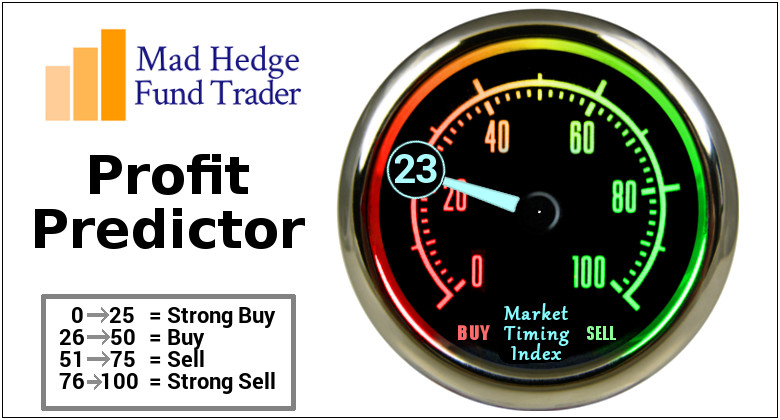
Mad Hedge Biotech and Healthcare Letter
June 23, 2022
Fiat Lux
Featured Trade:
(AN A-RATED STOCK FOR THE ANXIOUS INVESTOR)
(PFE), (AZN), (MRK), (NVO), (BNTX), (VLA), (GSK)

Choosing businesses with size and scale in their favor is more often than not a wise move for investors.
After all, these companies tend to be well established in their respective fields and hold a higher chance than their peers in terms of sticking around for a long time.
Pfizer (PFE) is an excellent example of a mature biopharmaceutical stock that could efficiently deliver great rewards to investors for many years.
However, the elephant in the room for this stock is whether the bumper profits from its COVID-19 vaccines will be sustained in the long term. These concerns have kept a lid regarding the company’s valuation.
If we strip out Comirnaty from the conversation, Pfizer will still have a decent valuation in relation to its share price today.
It has a current P/E of 11x and market capitalization to operating cash flows of 8.9x. In contrast, fellow vaccine maker AstraZeneca (AZN) has been trading at a negative P/E and a stressful market cap to operating cash flow of 27 times.
For added context, Big Pharma names Merck (MRK)’s P/E is 17x while Novo Nordisk (NVO) has been trading 37 times.
Going back to Pfizer, the company’s first-quarter earnings results for 2022 indicated a strong performance and reinforced its guidance this year.
For the full year of 2022, the company projects sales within the range of $98 billion to $102 billion.
To offer you a better picture of the scale of this growth, this would amount to 150% times the yearly sales between 2018 and 2020
It would actually be a quarter higher than the 2019 and 2020 sales combined.
If this roughly $100 billion forecast is achieved, Pfizer will become the first-ever pharmaceutical stock to reach that goal.
To put this in perspective, if we consider Pfizer as a country or a territory, then its GDP would be ranked 64th globally.
This would put it above Ethiopia and immediately behind Puerto Rico.
During this period, Pfizer recorded $25.7 billion in revenue, showing off an impressive 82% operational growth rate year-over-year and a 76% EPS growth.
Comirnaty, co-created with BioNTech (BNTX), raked in $13.2 billion, reporting a 282.1% spike for Pfizer
Meanwhile, the newly launched COVID-19 treatment, Paxlovid, generated $1.5 billion in revenue.
Pfizer’s consistent exponential growth, as shown in the first-quarter earnings, isn’t solely dependent on its COVID vaccines.
While Comirnaty and Paxlovid comprised over 50% of the $25 billion revenue in that period, sales from other segments continued to rise.
For example, stroke and blood clot treatment Eliquis generated $1.8 billion, up by 12% from its 2021 first-quarter sales of $1.2 billion. Meanwhile, heart failure treatment Vyndamax jumped by an impressive 41% to hit $612 million.
On top of its solid drug development pipeline, Pfizer has been leveraging its bumper cash flow to pursue bolt-on acquisitions of promising biopharmas.
Just last month, Pfizer acquired Biohaven Pharmaceuticals for $11.6 billion in cash. The smaller company’s primary treatment is Rimegepant, a migraine medication approved in both the US and Europe.
Aside from that, Pfizer threw its weight behind a fellow COVID vaccine maker, a French biotechnology company called Valneva (VLA).
Valneva’s most promising program is its late-stage development of a vaccine for Lyme disease.
When Pfizer announced its decision to add $95.6 million to the project plus up to $100 million in milestone payments, it triggered a massive 81% surge in Valneva stock price.
Pfizer and Valneva’s partnership for developing a Lyme disease vaccine started in 2020 when the bigger biopharma paid $130 million upfront.
This latest revision of their deal will not only up Pfizer’s stake in Valneva to 8.1% but also allow the French biotech to continue with its Phase 3 trial without the fear of straining its cash position.
Pfizer currently holds a distinct position in its history, with gushers of cash coming practically from all places.
These sums can only be expected to go higher with the anticipated listing of its consumer healthcare business, which it co-owns with GlaxoSmithKline (GSK). While there’s no official word yet on the deal, Pfizer’s plan to sell its stake could generate roughly $19 billion.
Moreover, the company maintains a respectable dividend yield of 3% and a net debt of roughly $10 billion, which can be completely paid off using its operating cashflows for three to four months.
This enables Pfizer to sustain a comfortable credit rating of “A” Stable from Fitch, thereby making it financially stable and safe from the ever-increasing interest rates.
Needless to say, Pfizer is the kind of stock that offers rare stability in this turbulent period.

Mad Hedge Biotech and Healthcare Letter
May 26, 2022
Fiat Lux
Featured Trade:
(WAITING FOR THIS BIOTECH TO STOP MONKEYING AROUND)
(INO), (BVNKF), (EBS), (JNJ), (PFE), (MRNA), (BNTX), (AZN), (NVAX), (REGN), (QGEN)
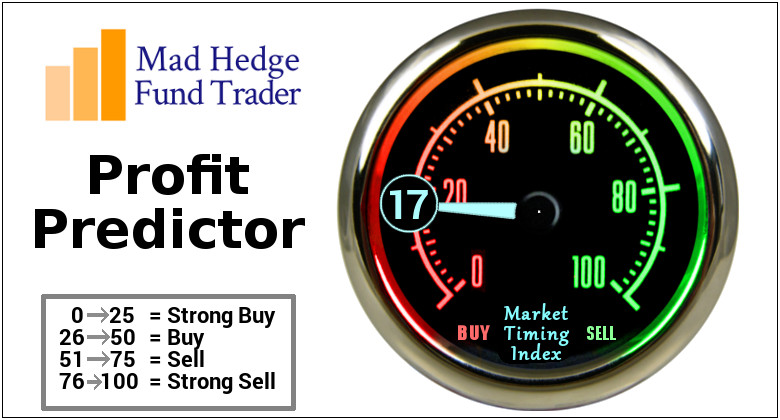
Almost immediately after US President Joe Biden advised that “everybody” should be concerned over the new worldwide outbreak of the monkeypox virus, the shares of biotechnology and healthcare companies working on monkeypox treatments and vaccines started to rise.
Shares of Danish company Bavarian Nordic (BVNKF), the only monkeypox vaccine developer approved in the US, were up 5.8% in premarket following the announcement.
Bavarian Nordic’s vaccine, called Jynneos, uses a live version of the smallpox virus, which has been altered so that it no longer can replicate in the recipient’s body or cause any infection.
Instead, it has been engineered to activate the immune system and prepare the body’s defenses to fight off smallpox and monkeypox viruses.
Based on data from Africa, two shots of Jynneos, administered 28 days apart, recorded up to 85% in terms of efficacy against monkeypox.
In 2019, Jynneos received regulatory approval from the US FDA for both smallpox and monkeypox.
Aside from Bavarian Nordic, shares of Emergent BioSolutions (EBS) also rose by 11.8% following Biden’s announcement.
While Emergent has no vaccine specifically for monkeypox, it has a smallpox vaccine that can be used to prevent monkeypox.
It can be recalled that Emergent BioSolutions has been an exiled ticker after the US Congress launched an investigation on the manufacturing issues in its Bayview Facility in 2021.
Although the company has managed to clean up that mess and is back to working with Johnson & Johnson (JNJ) to produce COVID-19 vaccines, EBS has yet to return to investors’ good graces.
While the scale of the threat has yet to be determined, the US has secured contracts for Jynneos and Emergent BioSolutions’ vaccine and is already stockpiling in case of an outbreak.
What’s curious, though, is that another company has benefited from this announcement despite not having any monkeypox or even smallpox vaccine candidates.
Inovio Pharmaceuticals (INO) shares rose by 12.2% following the announcement—a surge that couldn’t be adequately explained since the company has no relevant product and does not seem to have any program even remotely linked to this potential outbreak.
As far as I can tell, the last time Inovio even mentioned monkeypox was in 2010 when it discussed a potential experiment on a vaccine that could protect nonhuman primates against the virus. However, nothing came out of that plan either.
If Inovio sounds familiar to you, it’s probably because it was one of the frontrunners in the early days of the COVID-19 vaccine race.
However, it eventually lagged behind the likes of Moderna (MRNA), Pfizer (PFE), BioNTech (BNTX), and AstraZeneca (AZN).
One primary reason for this is the FDA’s decision to suspend Inovio’s Phase 3 trial in late 2020, with the study only resuming sometime in 2021.
As if that’s not enough, Inovio also faced some internal battles following the resignation of its CEO.
Now, the company has shifted gears and plans to offer its COVID-19 candidate as a booster shot instead of a primary vaccine.
The change of plans regarding the COVID-19 vaccine might be disappointing for some, but it’s essential to be realistic about expectations.
At the moment, the vaccine landscape has been dominated by Pfizer and Moderna, with AstraZeneca and Johnson & Johnson gaining ground as well.
Just recently, another challenger joined the fray: Novavax (NVAX).
Needless to say, the COVID-19 vaccine market is becoming crowded, and the competition is getting more intense.
Considering that Inovio has yet to catch up with the development of its candidate, it would be unwise to challenge the already established developers dominating the market today.
Hence, offering its COVID-19 candidate as a booster would provide it with higher marketability since health experts encourage people to mix and match their vaccines.
Outside these efforts, Inovio is a leader in developing DNA plasma-based vaccines. Before the pandemic, the company had been working on an extensive pipeline using this technology.
One of the most promising DNA-based vaccines from Inovio is VGX-3100, which targets an HPV-triggered disease called cervical dysplasia. Simply, this is a pre-cancer condition.
Inovio’s candidate is the first-ever DNA-based treatment that reached Phase 3 trials and reaped positive results.
This is an exciting development, especially in light of Inovio’s partnership with Qiagen (QGEN), as the two can leverage their work to determine which patients are at risk.
Basically, Inovio and Qiagen might just be on the verge of coming out with a preventive vaccine for cancer.
If things go according to plan, the data should be released by the second half of 2022. In terms of price, VGX-3100 is expected to cost roughly $10,000.
Aside from these, Inovio is also collaborating with Regeneron (REGN) to develop a cure for glioblastoma, an incredibly aggressive type of brain cancer. So far, Phase 2 trial results look promising, and the partners are on their way to progressing to Phase 3.
Inovio’s pipeline covers many DNA vaccines targeting infectious diseases and cancers. Most are still in the early phases of development.
While the programs in Phase 2 and 3 trials are promising, I think it’s still too early to predict whether Inovio is truly capable of delivering on its promises.
I know that Inovio shares look like such a bargain these days, especially if the company ends up receiving regulatory approvals in the coming months, but I’m not yet fully convinced.
Overall, Inovio is worth considering right now. It’s definitely on my list.
But before I commit, I’d like to see at least whether the company’s COVID-19 and HPV pipelines can move past the latest headwinds and advance to the next levels.

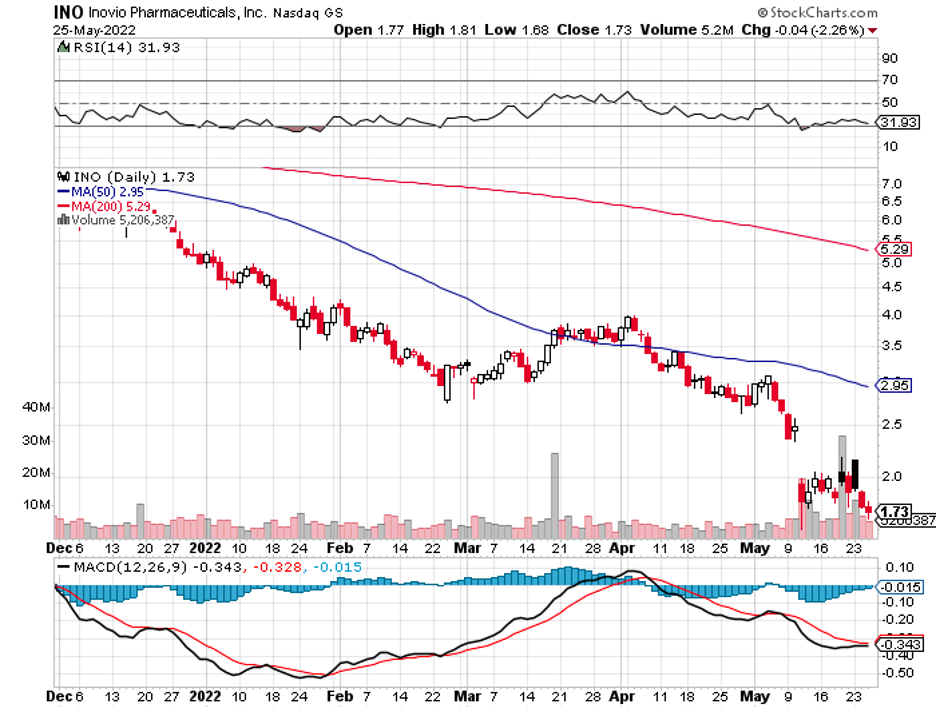
Mad Hedge Biotech and Healthcare Letter
May 17, 2022
Fiat Lux
Featured Trade:
(A BIOTECH PIONEER WITH AN ENDURING LEGACY)
(AMGN), (AZN), (ABBV)
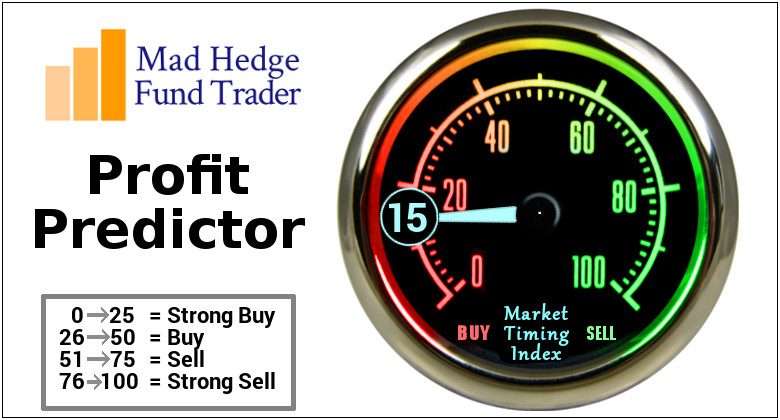
Mad Hedge Biotech and Healthcare Letter
April 21, 2022
Fiat Lux
Featured Trade:
LET’S GET READY TO RUMBLE)
(MRNA), (PFE), (BNTX), (AZN), (ABBV), (MRK), (BMY), (TAK), (GILD),
(SNY), (ALNY), (NVS), (REGN), (IONS), (GSK), (BIIB), (CRSP)
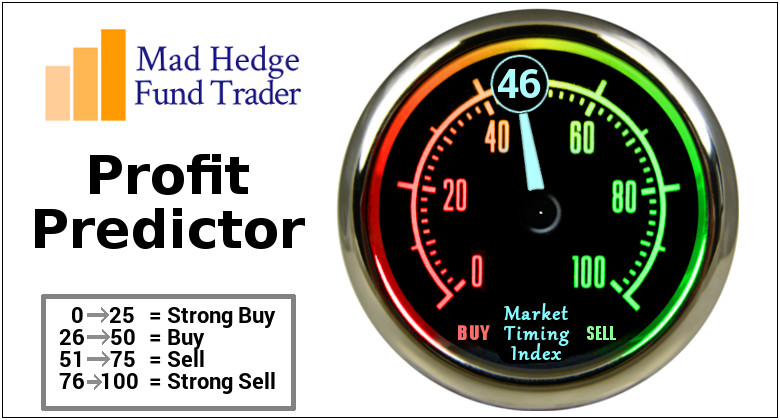
As we gradually reach the pinnacle of biotechnology formation, a war is brewing in the life sciences world.
This can be one of the most exciting times for medical innovations for patients. Meanwhile, investors can be picky when picking where to put their money.
Even up-and-coming scientists can seize the opportunities to lay the groundwork for their own dream organizations.
At the same time, those aspiring to climb the corporate ladder have better chances at becoming CEO without the need to slog through the biopharma sector and scramble for whatever opening is available.
However, as more and more companies launch practically every day, claiming to offer groundbreaking and revolutionary breakthroughs, it’s critical to keep in mind that not all biotechs will succeed.
Actually, the number of biotech companies has been steadily rising since 2015.
In that year, 177 firms were formed, with biotech birth rates breaching the 200-per-annum mark by 2017 and 2018.
Seeing as many more have emerged even during the pandemic, it looks like the biotech world won’t be slowing down anytime soon.
Even funding hasn’t been deterred by economic downturns.
From 2015 to 2018, the total funding for biotech companies averaged between $68.6 million to roughly $90.2 million.
After a bustling, record-breaking 2020, the bar leading to 2021 was expectedly high.
Surprisingly, 2021 blew those figures out of the water as private investors opted to raise the bar even higher.
It’s the type of climb that’s truly hard to believe.
Biotechs raised over $22 billion in private funds in 2020 following a sluggish 2019. In 2021, that figure rose to $28.5 billion.
The top earner in these funding rounds last year was China’s Abogen, which took $1 billion in private investors’ money across two rounds.
Abogen is an mRNA-centered firm that’s currently working on a COVID-19 vaccine.
What makes its product different and possibly better than Moderna (MRNA), Pfizer (PFE), BioNTech (BNTX), and AstraZeneca (AZN) is that it would be thermostable. That is, it could be used in areas without access to refrigeration.
Another big winner in 2021 is Massachusetts-based biotech ElevateBio, which aims to be a one-stop shop for cell and gene therapies.
The idea is to develop a technology that fuses its gene-editing platform, cell engineering structure, and manufacturing warehouse into one system to ease and accelerate the drug development process.
Although not entirely the same, this plan has similarities with the strategies of Big Pharma names like AbbVie (ABBV) and Merck (MRK).
Amid the growing number of biotechs, a key challenge is how to stand out among companies that target the same disease areas. This kind of competition could hamper innovation.
The clearest indicator of success would be receiving approval and being able to launch the products commercially.
Ultimately, the goals are to offer safe and effective treatments and provide value to their shareholders.
Unfortunately, the reality is only a handful of startups do make it all the way to the top.
The more feasible scenario is that bigger businesses would acquire these companies—and that seems to be the case these days.
Alongside the booming biotech formation rate are the increasingly aggressive biotech buyout deals.
We’ve seen this before.
It started in 2019, with Bristol Myers Squibb (BMY) buying Celgene, followed by AbbVie splurging on Allergan and Takeda (TAK) merging with Shire.
In 2020, AstraZeneca bought biotech superstar Alexion Pharmaceuticals while Gilead Sciences (GILD) snapped up Immunomedics.
Meanwhile, Sanofi (SNY) stacked its deck with the $3.2 billion acquisition of Translate Bio. As for Merck, this biopharma sneaked in a massive win with an $11.5 billion buyout of Acceleron.
For this year, several names have already been eyed by Big Pharmas.
There’s Alynlam Pharmaceuticals (ALNY), an RNA-centered company, which seems to be the target of both Novartis (NVS) and Regeneron (REGN).
Another RNA-focused company, Ionis Pharmaceuticals (IONS), appears to be a key target as well, with the likes of GlaxoSmithKline (GSK), Bayer, and even Biogen (BIIB) waiting for an opportunity to pounce.
After all, acquisitions form an integral lifeline of the biotech world. Huge businesses with the resources swoop up promising buyout candidates to bolster their own pipelines.
However, M&A isn’t the only option for biotechs. There’s also the path where they can seek companies with similar focus and consolidate to become larger and more competitive entities.
This has been the expected plan for CRISPR Therapeutics (CRSP) for a long time. Hence, it is no surprise if other biotechs with their own groundbreaking technologies decide to follow the same route.
Overall, the biotech industry is booming amid its recent struggles with the market.
The faster growth rate of companies can be attributed to more investors seeing the industry's potential and, of course, better access to technology and scientific advancement.
Moreover, the world has become more interested in the biotech world and what the industry can offer due to the pandemic.
COVID-19 has shone a light on this sector following the quick and effective results of the vaccines and treatments.
That is, people have finally caught on to the idea that there is an incredible opportunity in biotech.
While a correction is to be expected at some point, the critical thing to bear in mind is that great ideas will always generate funding no matter what.
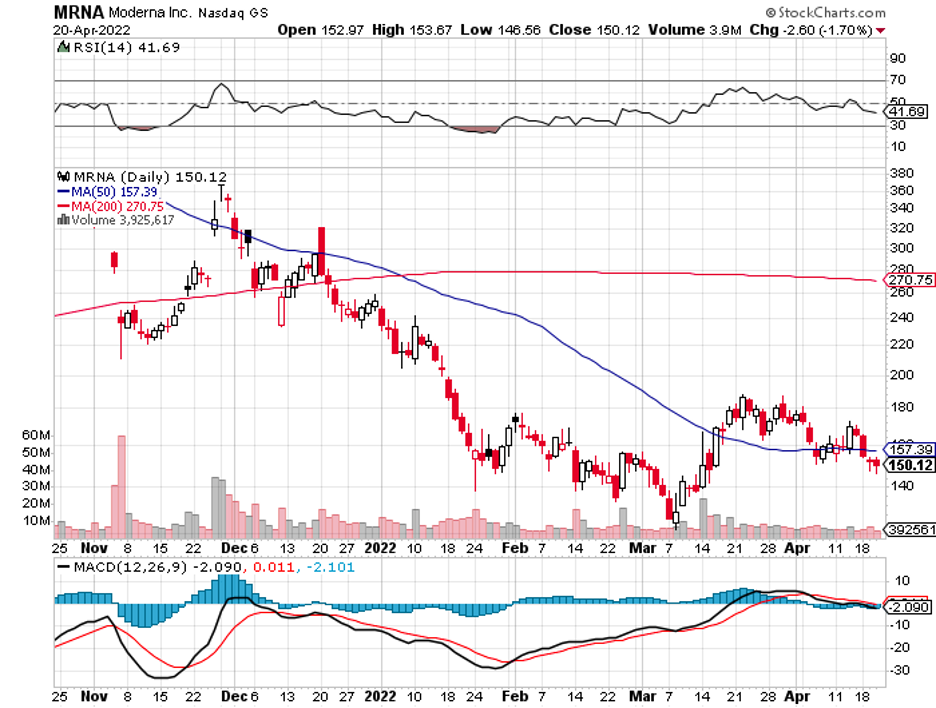

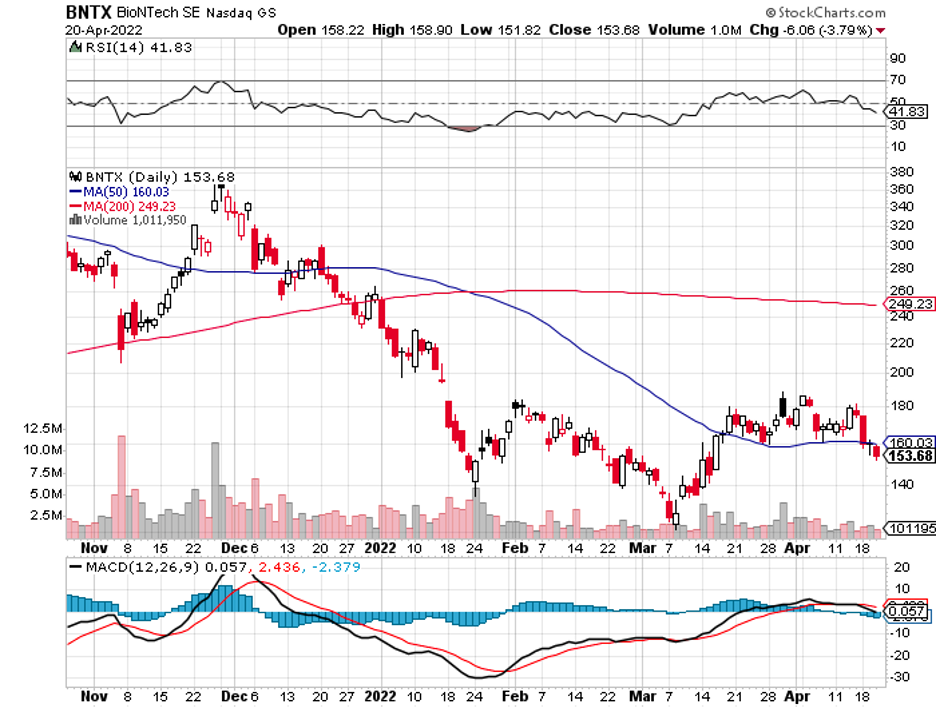
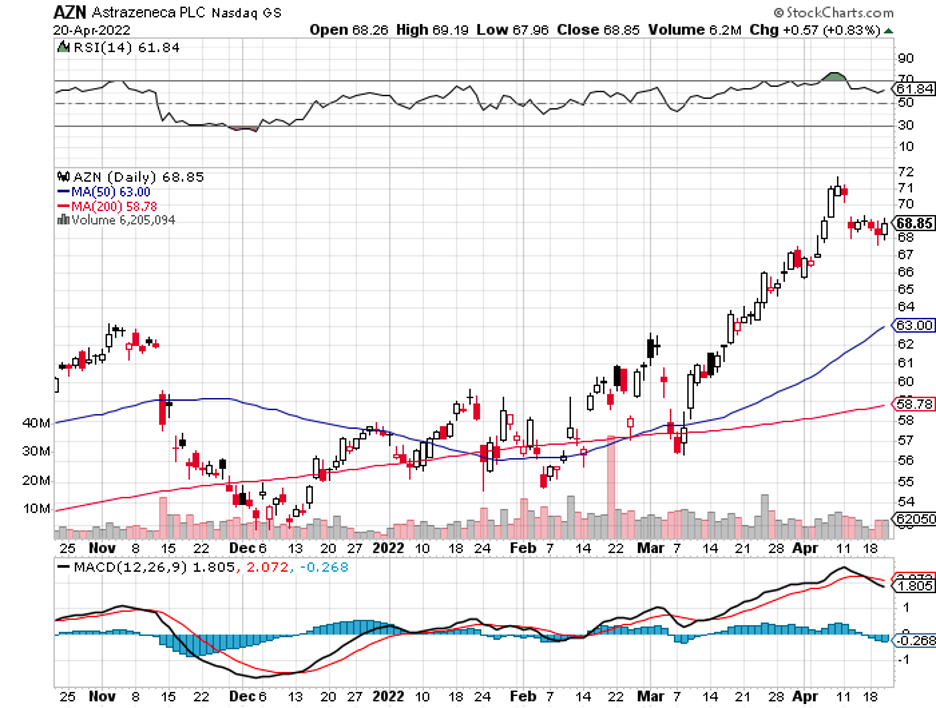
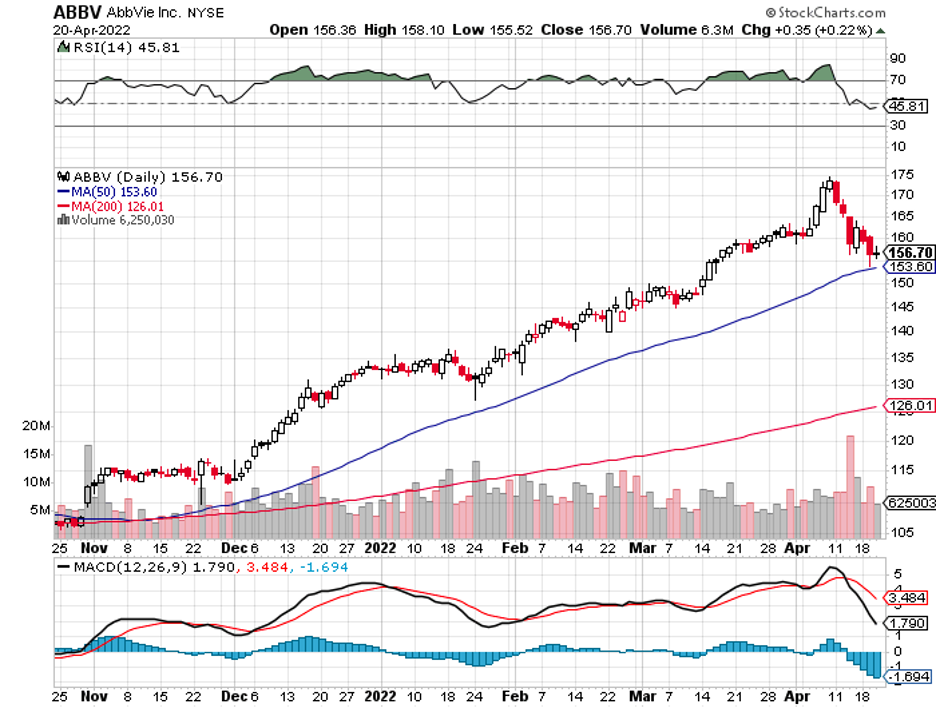
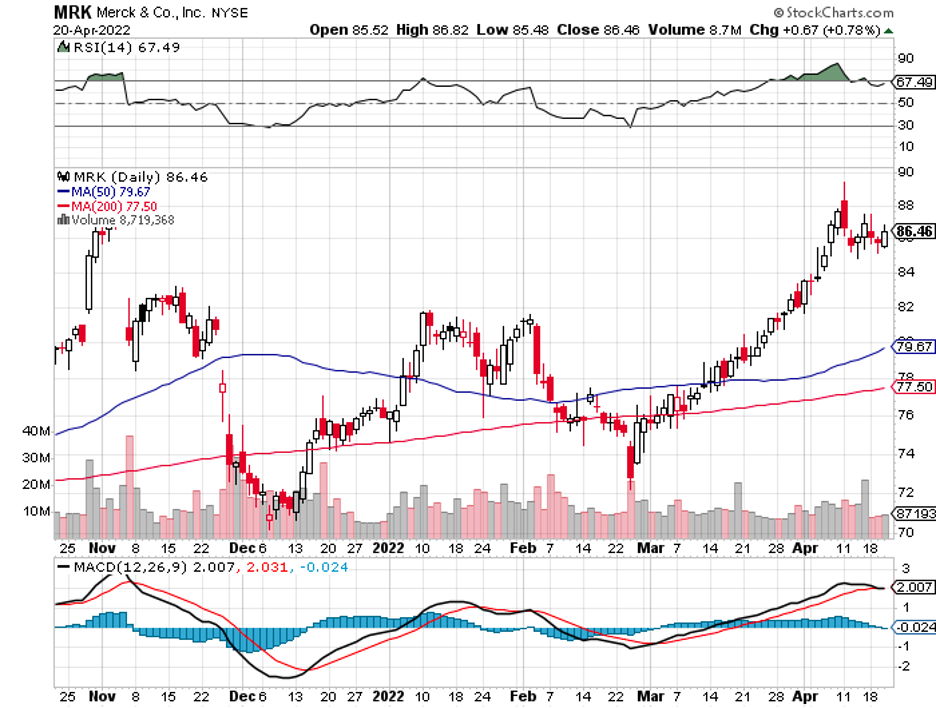
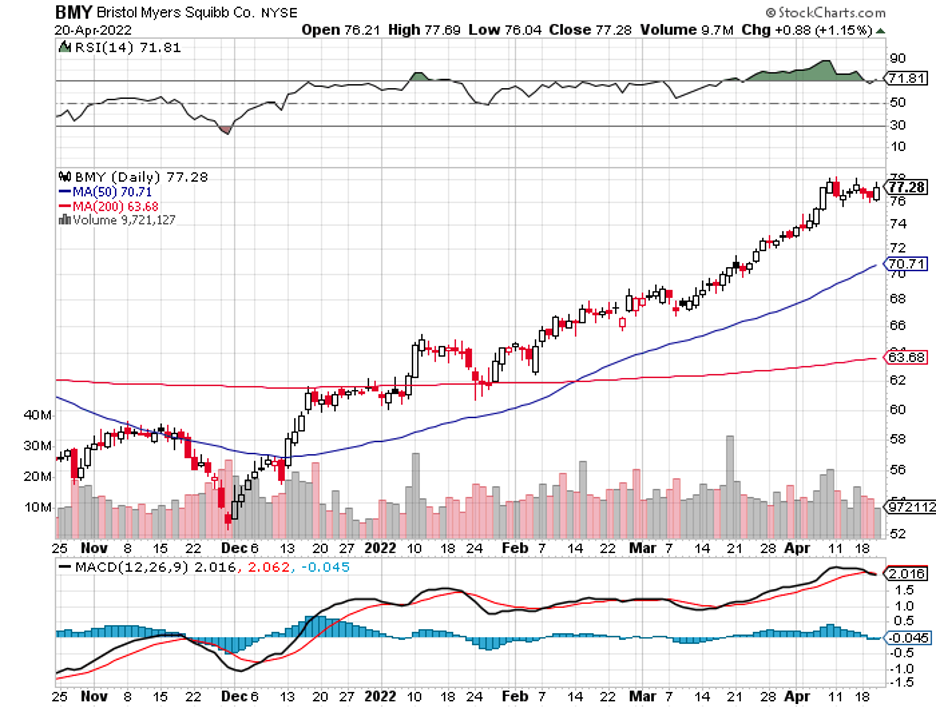
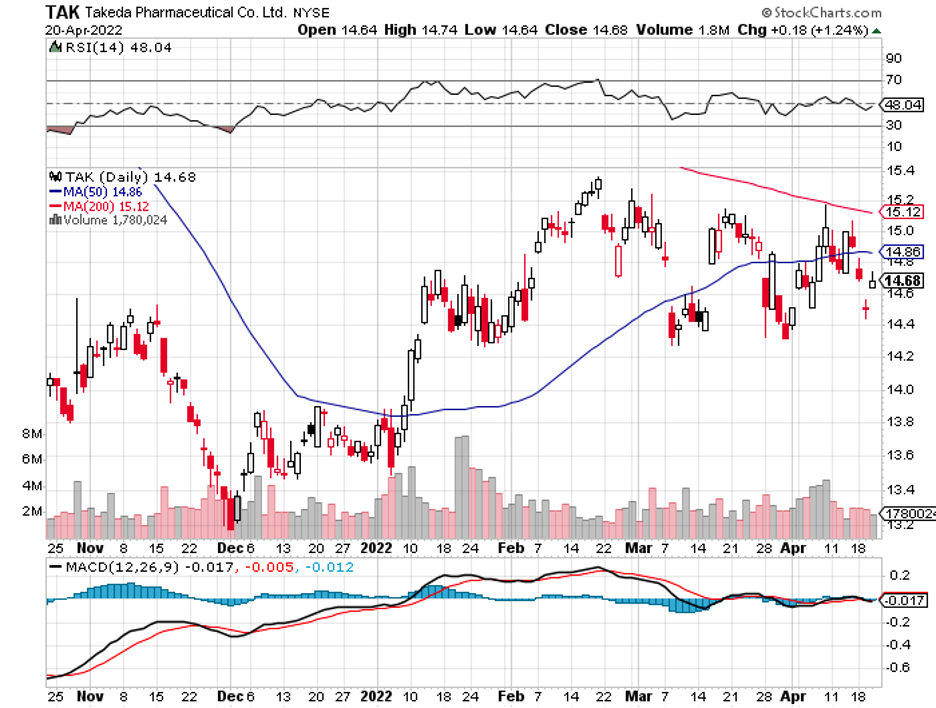
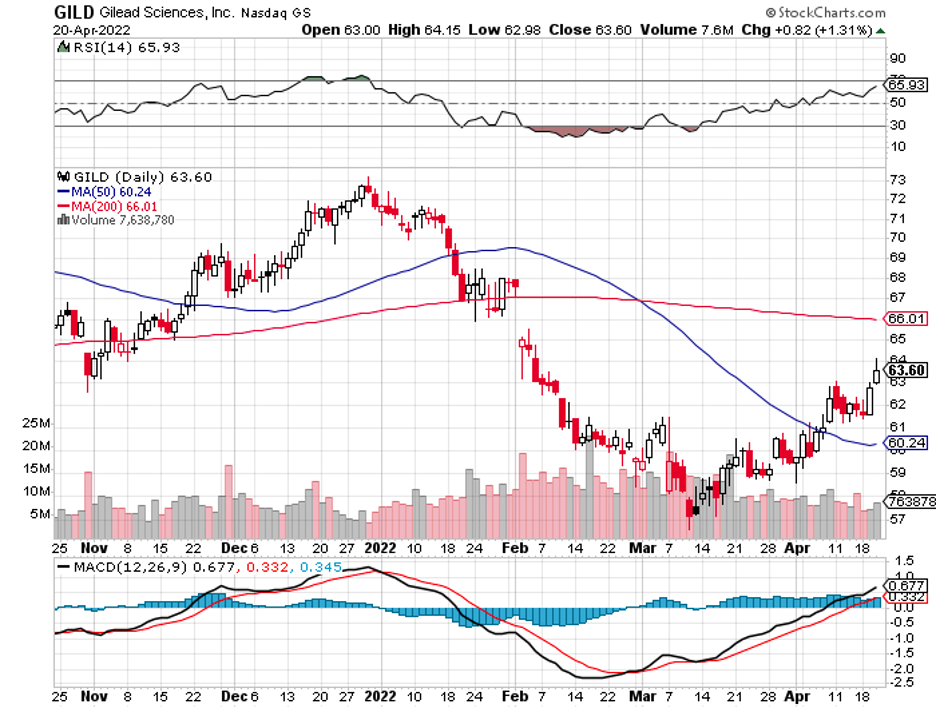
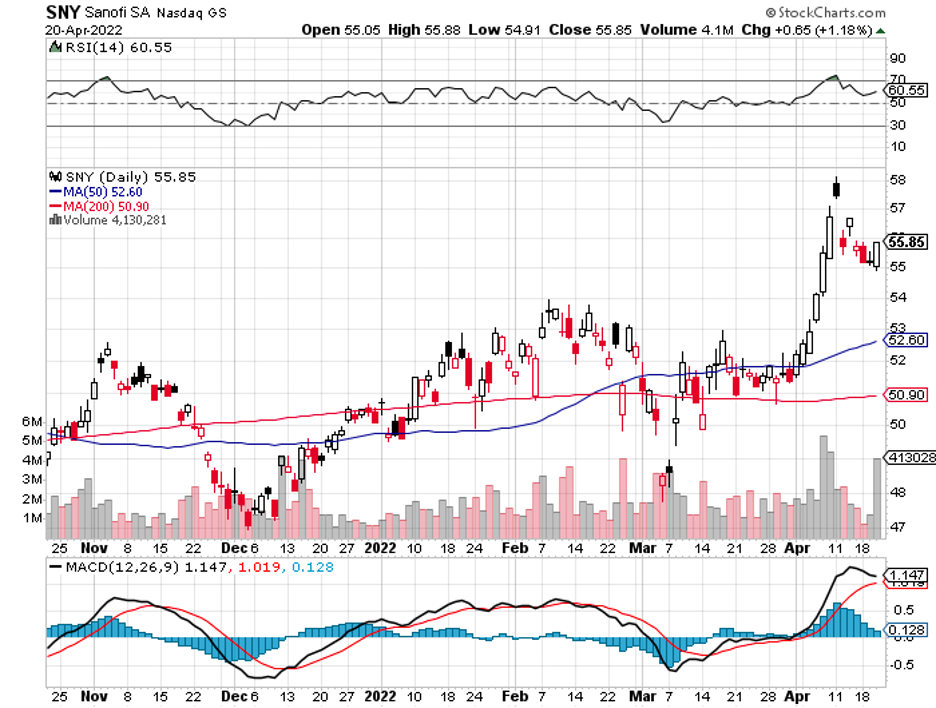
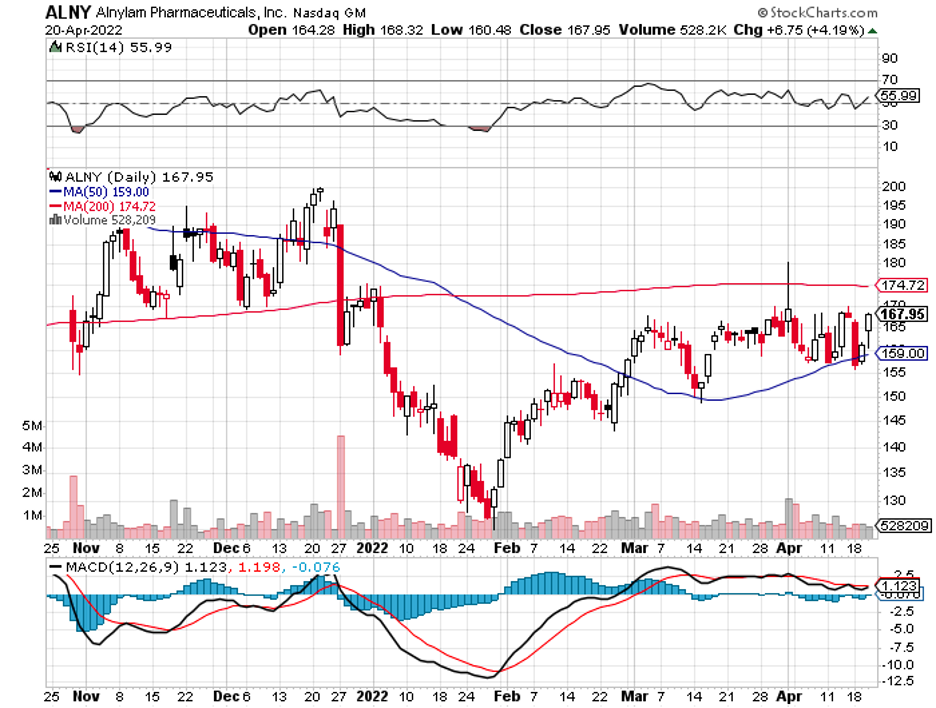

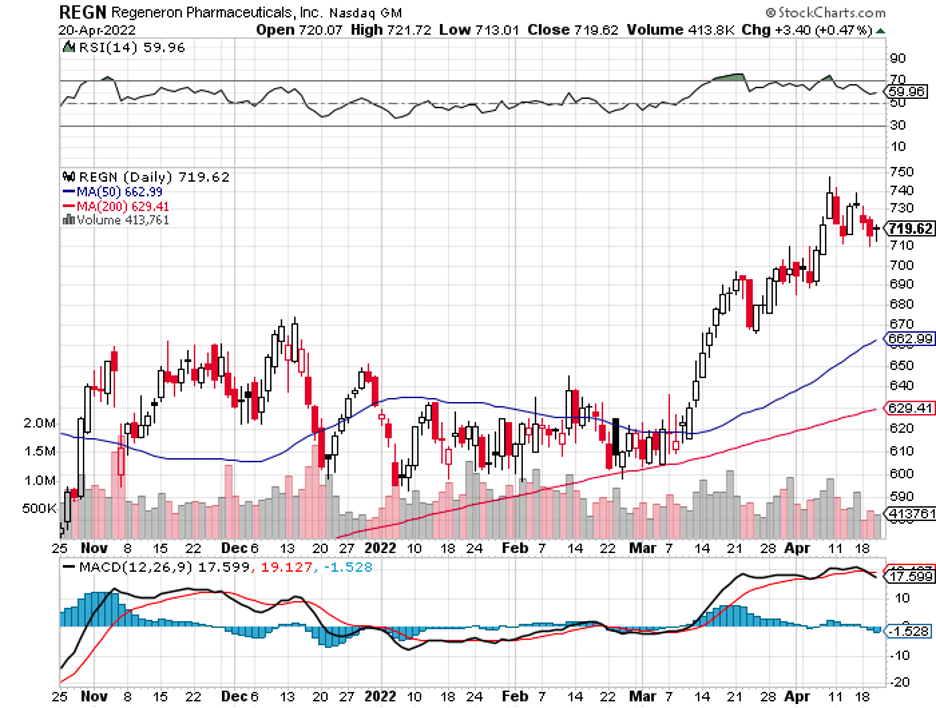
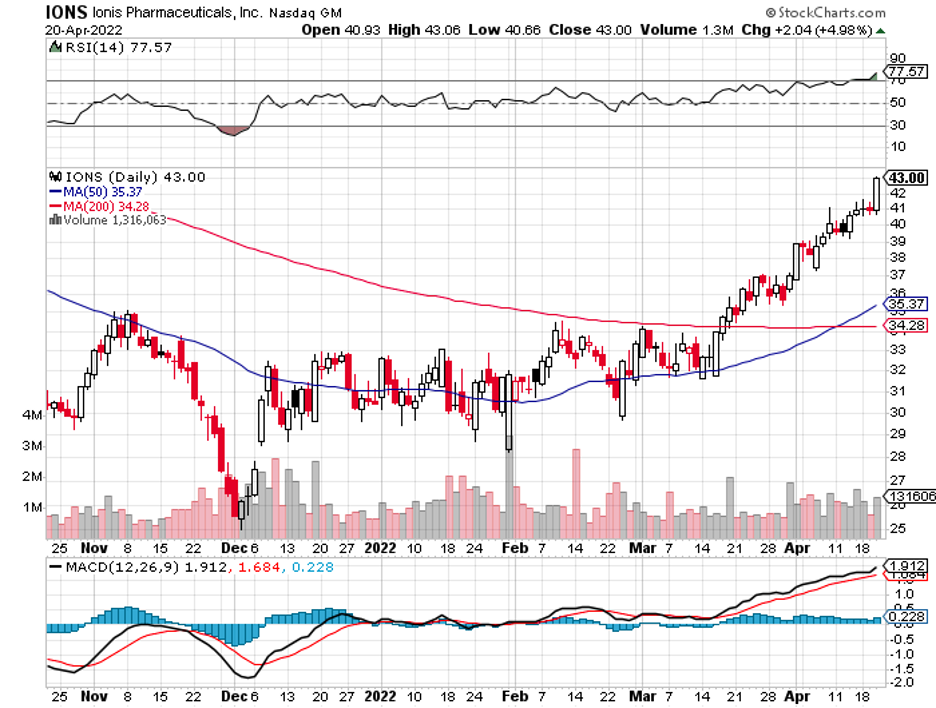
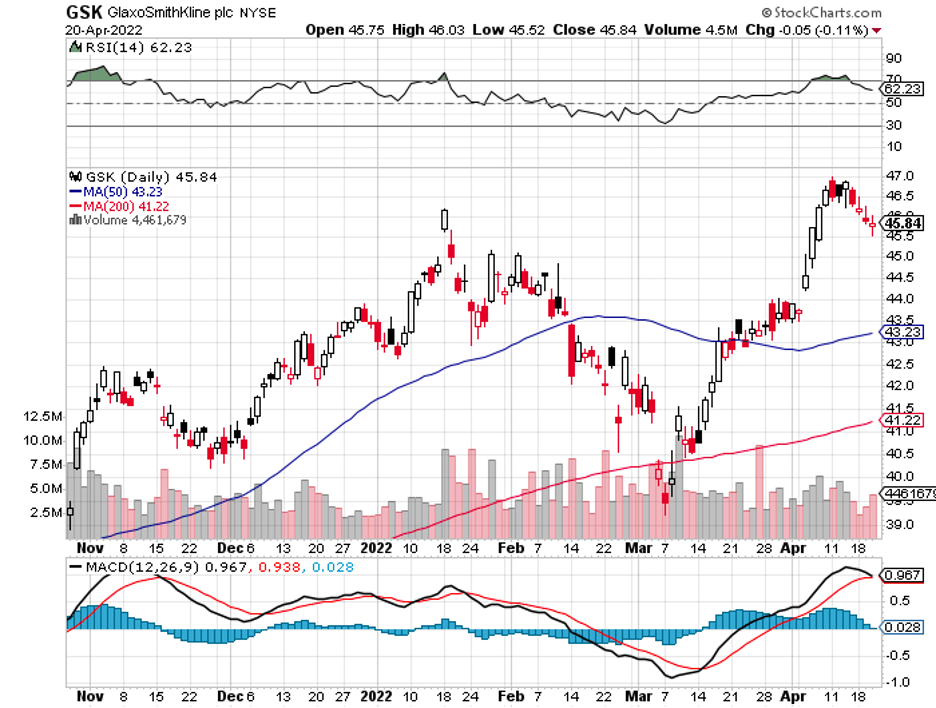
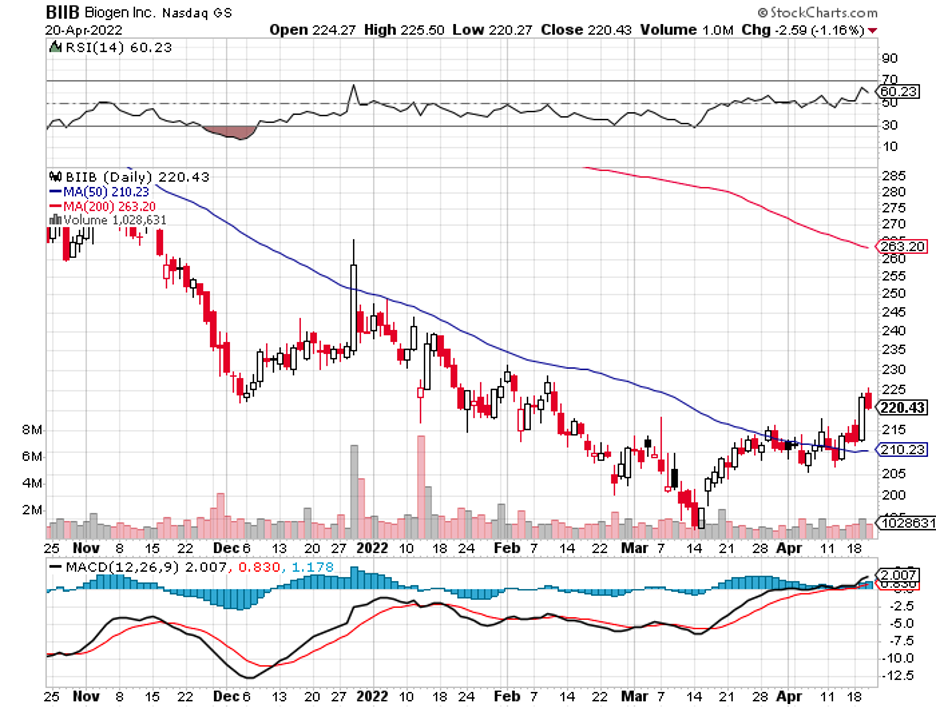
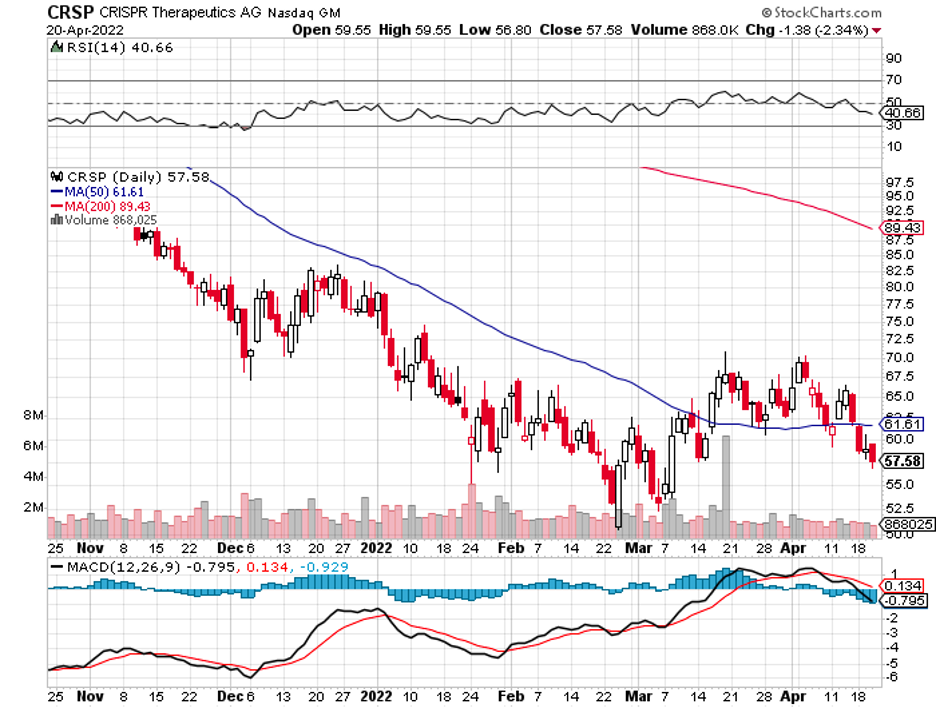
Mad Hedge Biotech and Healthcare Letter
April 12, 2022
Fiat Lux
Featured Trade:
(CAN THIS BE THE NEXT 10-BAGGER BIOPHARMA STOCK?)
(PFE), (BNTX), (GSK), (SNY), (AZN)
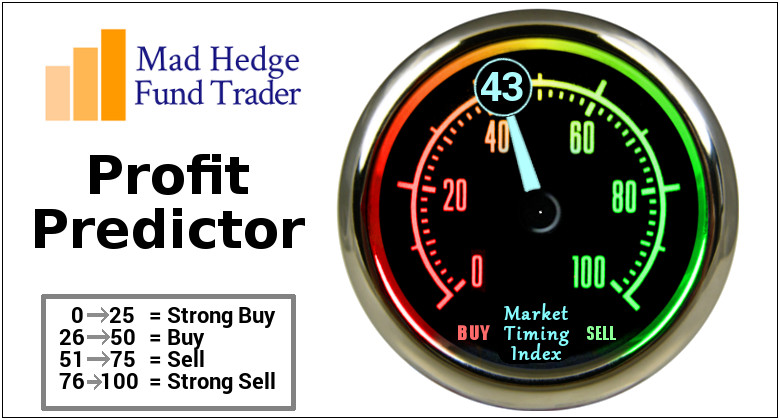
Being one of the most famous names in the biotechnology and healthcare industry, Pfizer (PFE) barely needs any introduction.
Thanks primarily to its COVID-19 vaccine, Comirnaty, Pfizer’s top line has skyrocketed, with its trailing 12-month revenue exploding by over 99% in the past three years and recording a total of a whopping $81.2 billion.
Realistically speaking, it’s best not to rate the chances of this happening again in the years to come.
Still, there are several factors that make Pfizer a convincing stock to hold even when the pandemic shifts to an endemic.
First, the COVID-19 program will most likely continue to rake in blockbuster revenues. Although it won’t be as high as the previous years, Comirnaty sales are projected to reach $39 billion this 2022 and $22 billion in 2023.
Apart from this vaccine, which was developed with BioNTech (BNTX), Pfizer also recently received approval for its own COVID-19 oral treatment called Paxlovid. The addition of this pill in its portfolio all but guarantees another high-growth revenue stream for the company.
Second, Pfizer holds eight blockbuster treatments focused on diverse sectors.
While these will eventually struggle with generic competition by 2030, the company has that issue covered. To date, Pfizer has roughly 89 candidates in its pipeline with 27 undergoing Phase 3 trials.
Pfizer’s plans to expand its pipeline became particularly evident in the past week as the company made some noise in the muted M&A scene.
Right on the heels of its successes in its lead RSV vaccine candidate, Pfizer bolstered this program through a $525 million biotechnology buyout.
The company that caught this Big Pharma’s attention is ReViral, which has been hard at work in developing Sisunatovir, an oral RSV drug.
While eyebrows may have raised over the price tag for a company with a single asset, it should be noted that Sisunatovir is estimated to rake in $1.5 billion in annual sales—and this pill isn’t the only candidate in ReViral’s pipeline.
All in all, that’s obviously not a bad payback for a contract this size.
The RSV space has always been a challenging and lucrative market for biopharmas, with the global costs linked to this disease reaching $5.45 billion in 2017.
Researchers have been working on a vaccine for decades, with some experiments dating as far back as the 1960s.
With the addition of ReViral to its portfolio, Pfizer has clearly positioned itself as the frontrunner in the RSV vaccine race.
This puts it firmly ahead of GlaxoSmithKline (GSK), which had to suspend its trials for safety reasons, and even the partnership between Sanofi (SNY) and AstraZeneca (AZN).
Evidently, Pfizer’s deep pockets could indicate additional acquisitions of smaller companies with promising candidates in their pipelines.
We’ve seen this happen with ReViral and, prior to this, Arena Pharmaceuticals to the tune of $6.7 billion primarily for the smaller biotech’s encouraging anti-inflammatory treatment Etrasimod.
Although that price tag initially raised doubts about Pfizer’s spending, a deeper analysis of Arena’s pipeline showed that it could bring $28 billion per annum by 2025.
Flush with the billions it earned from its COVID-19 program, the recent ReViral deal appears to be a relatively minor one for Pfizer.
This leads me to believe that this move marks the beginning of a fresh season of biotech buyouts—and Pfizer might very well be in the lead.
Overall, Pfizer presents a compelling investment case. It is remarkably diversified, which means it offers below-average risks.
Considering its trajectory and putting it against the backdrop of the fast-growing biotechnology industry, Pfizer has the potential to become a trillion-dollar company within 20 years.
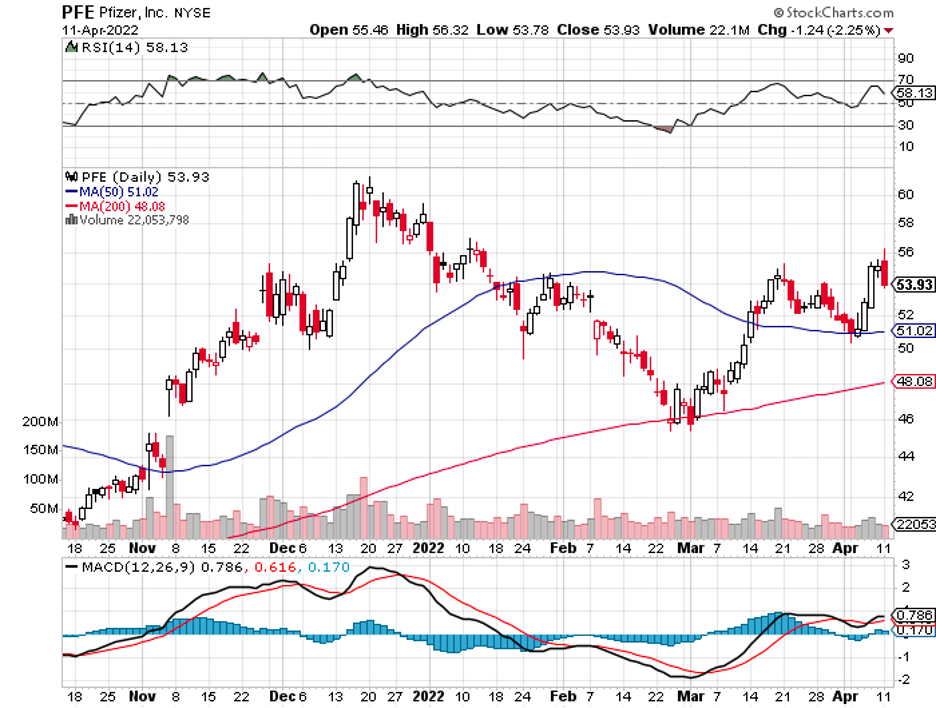
Mad Hedge Biotech and Healthcare Letter
March 29, 2022
Fiat Lux
Featured Trade:
(A DURABLE AND ENDURING STOCK IN THESE TROUBLING TIMES)
(AMGN), (JNJ), (AZN), (ABBV)
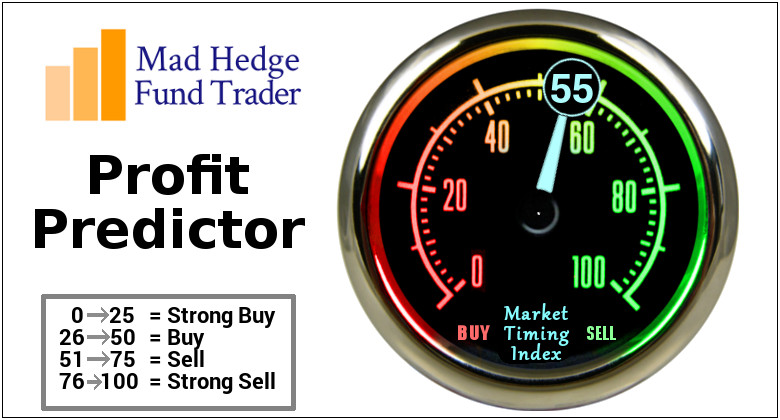
Legal Disclaimer
There is a very high degree of risk involved in trading. Past results are not indicative of future returns. MadHedgeFundTrader.com and all individuals affiliated with this site assume no responsibilities for your trading and investment results. The indicators, strategies, columns, articles and all other features are for educational purposes only and should not be construed as investment advice. Information for futures trading observations are obtained from sources believed to be reliable, but we do not warrant its completeness or accuracy, or warrant any results from the use of the information. Your use of the trading observations is entirely at your own risk and it is your sole responsibility to evaluate the accuracy, completeness and usefulness of the information. You must assess the risk of any trade with your broker and make your own independent decisions regarding any securities mentioned herein. Affiliates of MadHedgeFundTrader.com may have a position or effect transactions in the securities described herein (or options thereon) and/or otherwise employ trading strategies that may be consistent or inconsistent with the provided strategies.
This site uses cookies. By continuing to browse the site, you are agreeing to our use of cookies.
OKLearn moreWe may request cookies to be set on your device. We use cookies to let us know when you visit our websites, how you interact with us, to enrich your user experience, and to customize your relationship with our website.
Click on the different category headings to find out more. You can also change some of your preferences. Note that blocking some types of cookies may impact your experience on our websites and the services we are able to offer.
These cookies are strictly necessary to provide you with services available through our website and to use some of its features.
Because these cookies are strictly necessary to deliver the website, refuseing them will have impact how our site functions. You always can block or delete cookies by changing your browser settings and force blocking all cookies on this website. But this will always prompt you to accept/refuse cookies when revisiting our site.
We fully respect if you want to refuse cookies but to avoid asking you again and again kindly allow us to store a cookie for that. You are free to opt out any time or opt in for other cookies to get a better experience. If you refuse cookies we will remove all set cookies in our domain.
We provide you with a list of stored cookies on your computer in our domain so you can check what we stored. Due to security reasons we are not able to show or modify cookies from other domains. You can check these in your browser security settings.
These cookies collect information that is used either in aggregate form to help us understand how our website is being used or how effective our marketing campaigns are, or to help us customize our website and application for you in order to enhance your experience.
If you do not want that we track your visist to our site you can disable tracking in your browser here:
We also use different external services like Google Webfonts, Google Maps, and external Video providers. Since these providers may collect personal data like your IP address we allow you to block them here. Please be aware that this might heavily reduce the functionality and appearance of our site. Changes will take effect once you reload the page.
Google Webfont Settings:
Google Map Settings:
Vimeo and Youtube video embeds:
